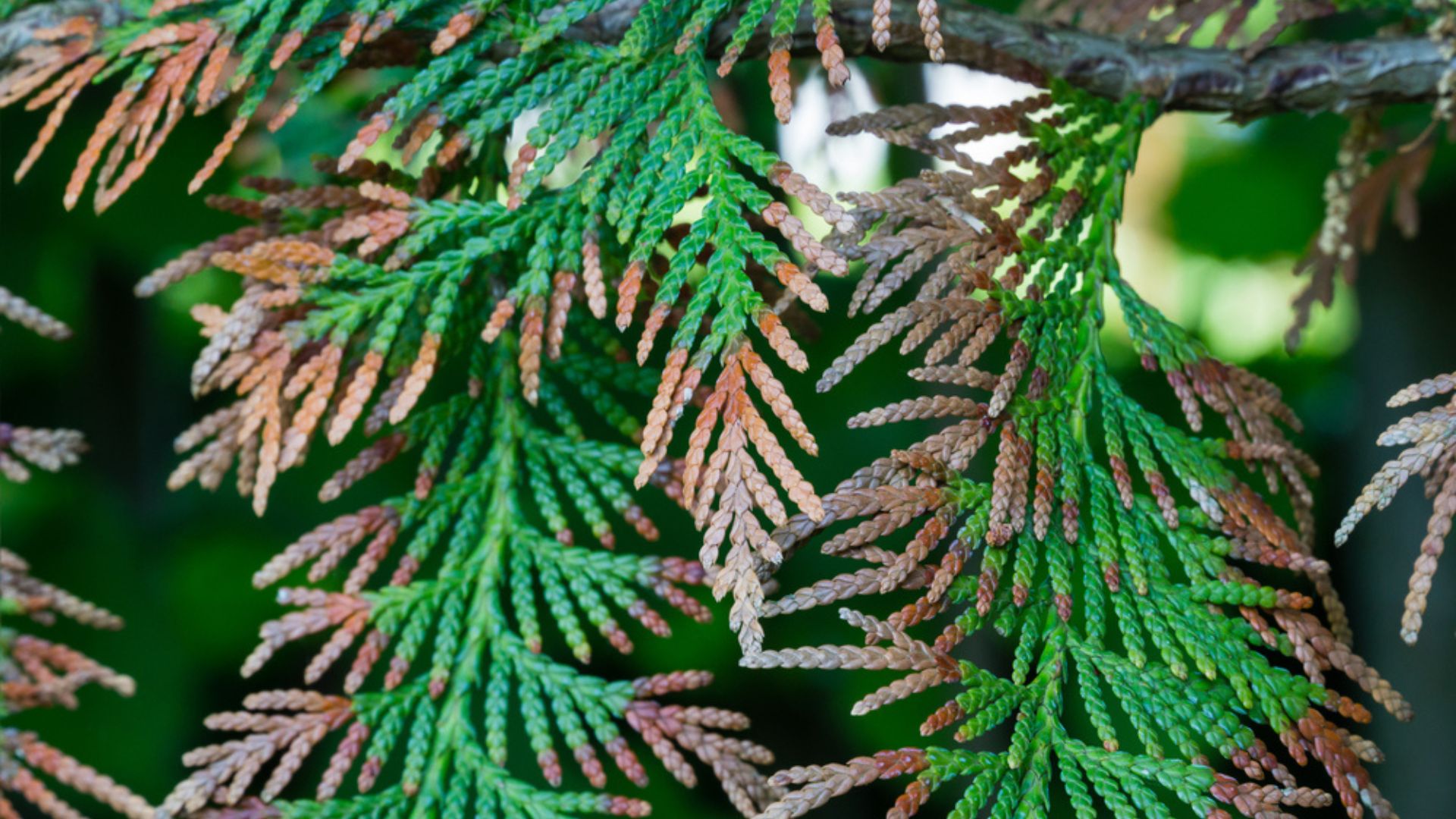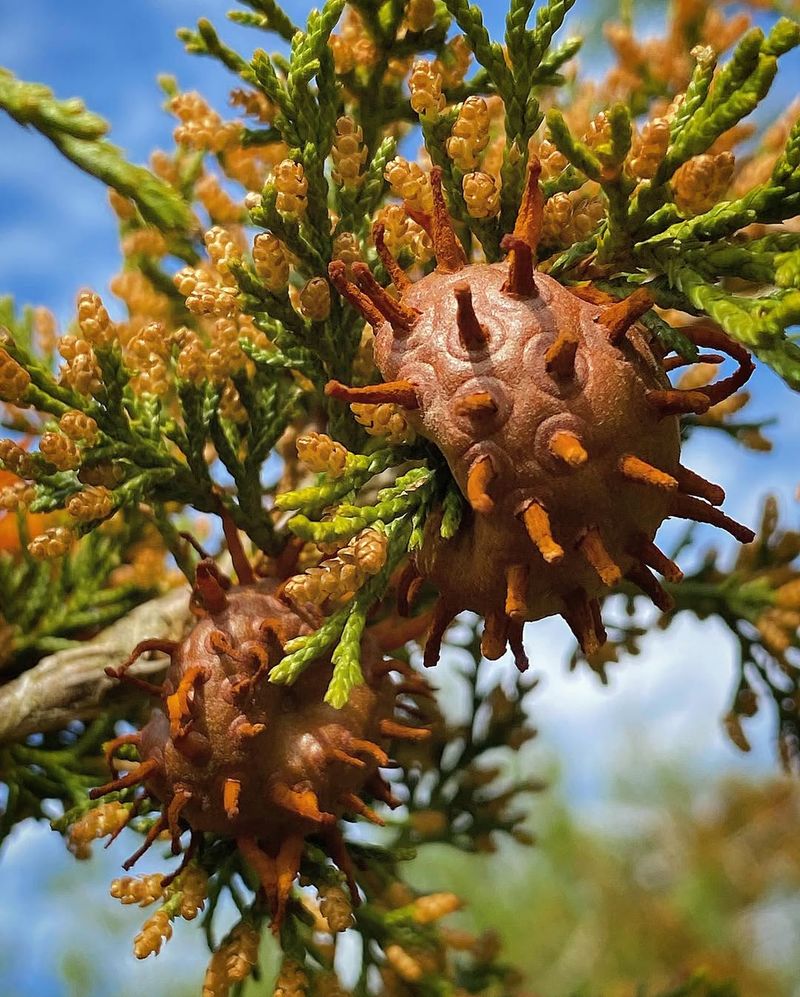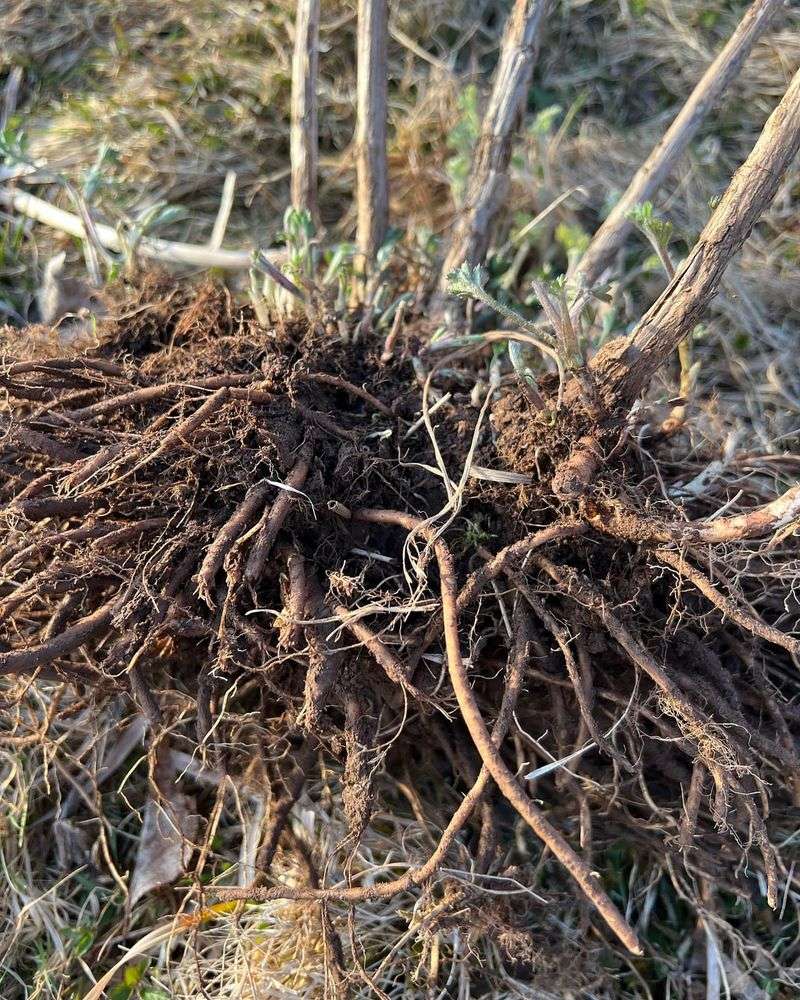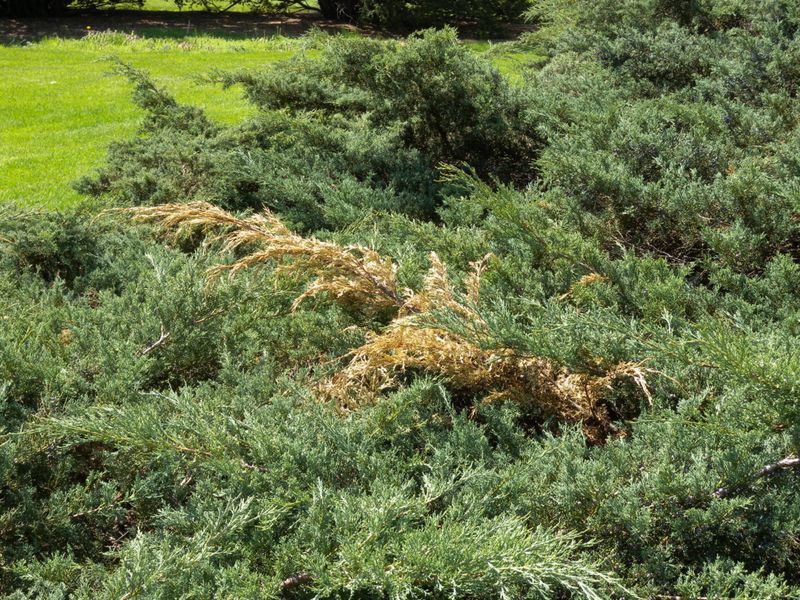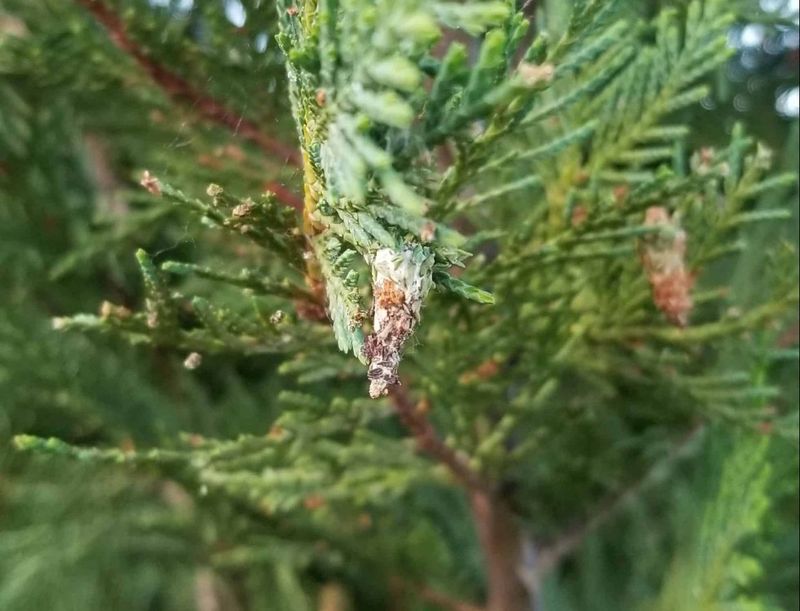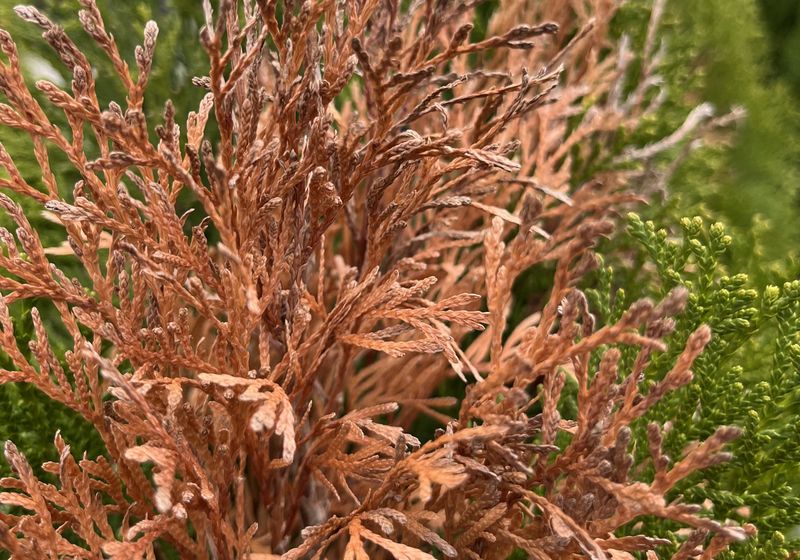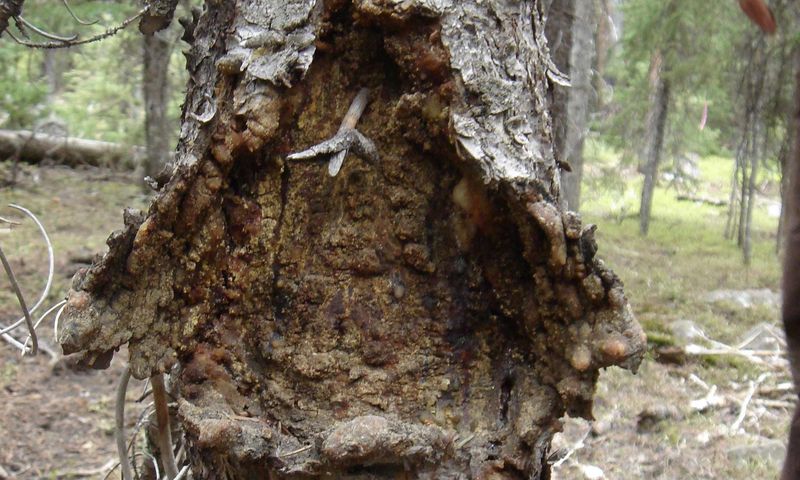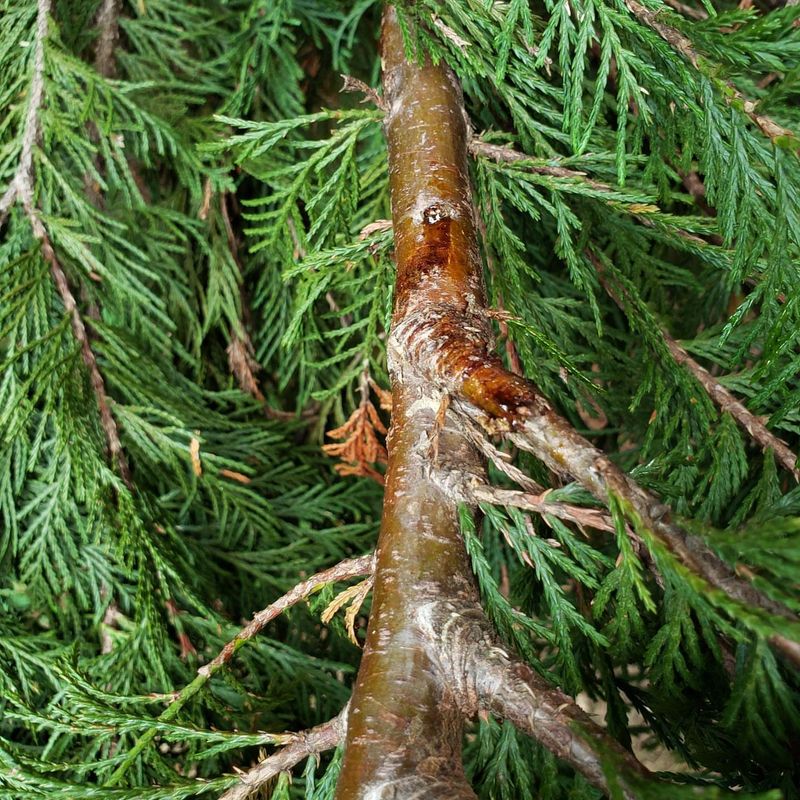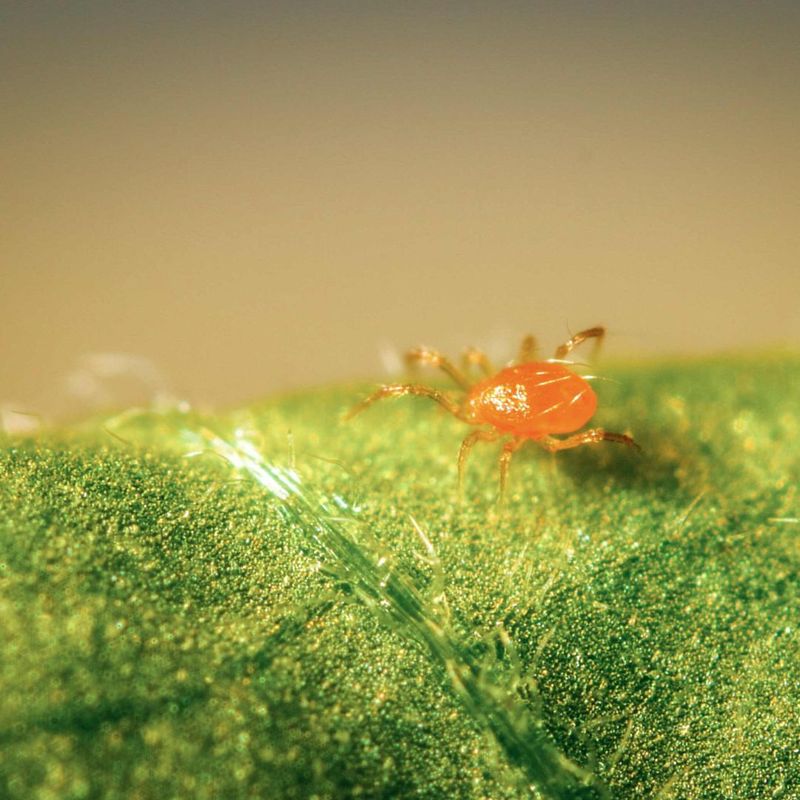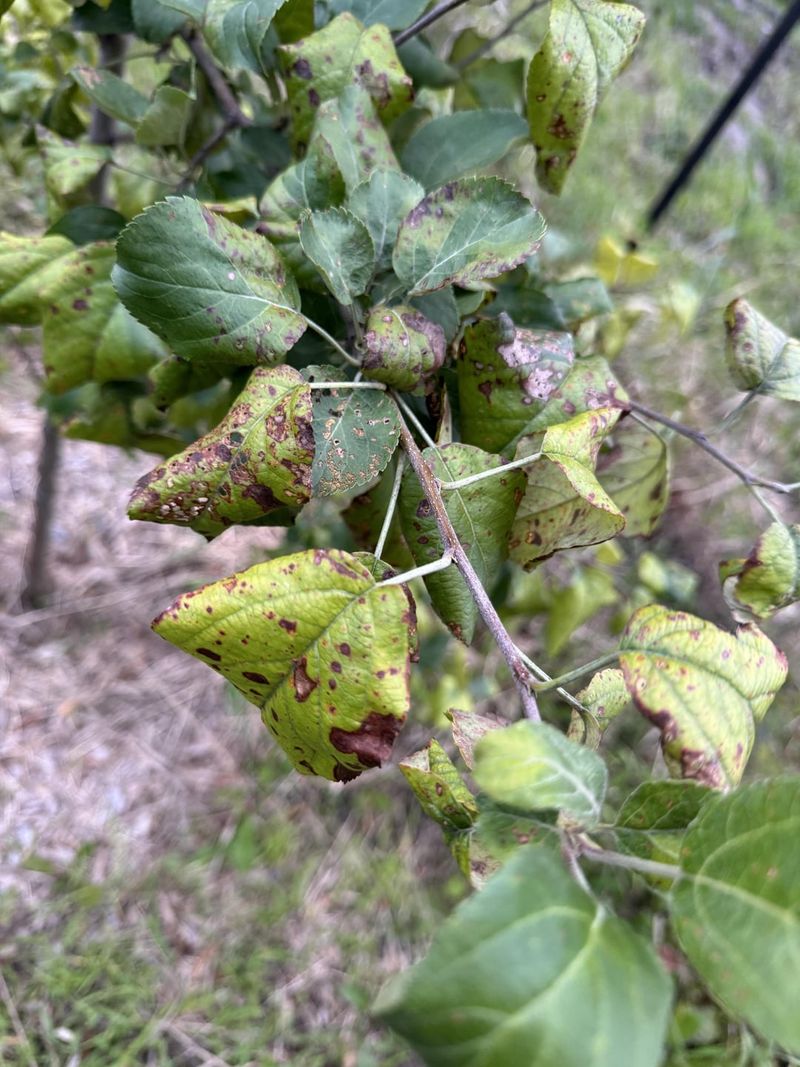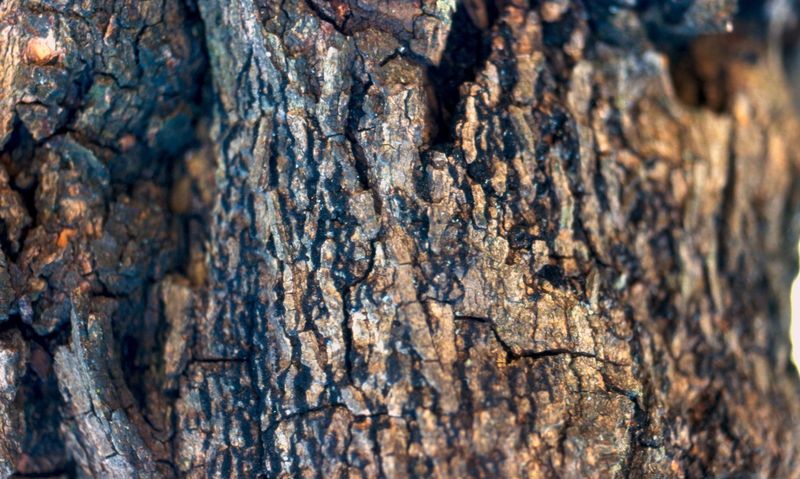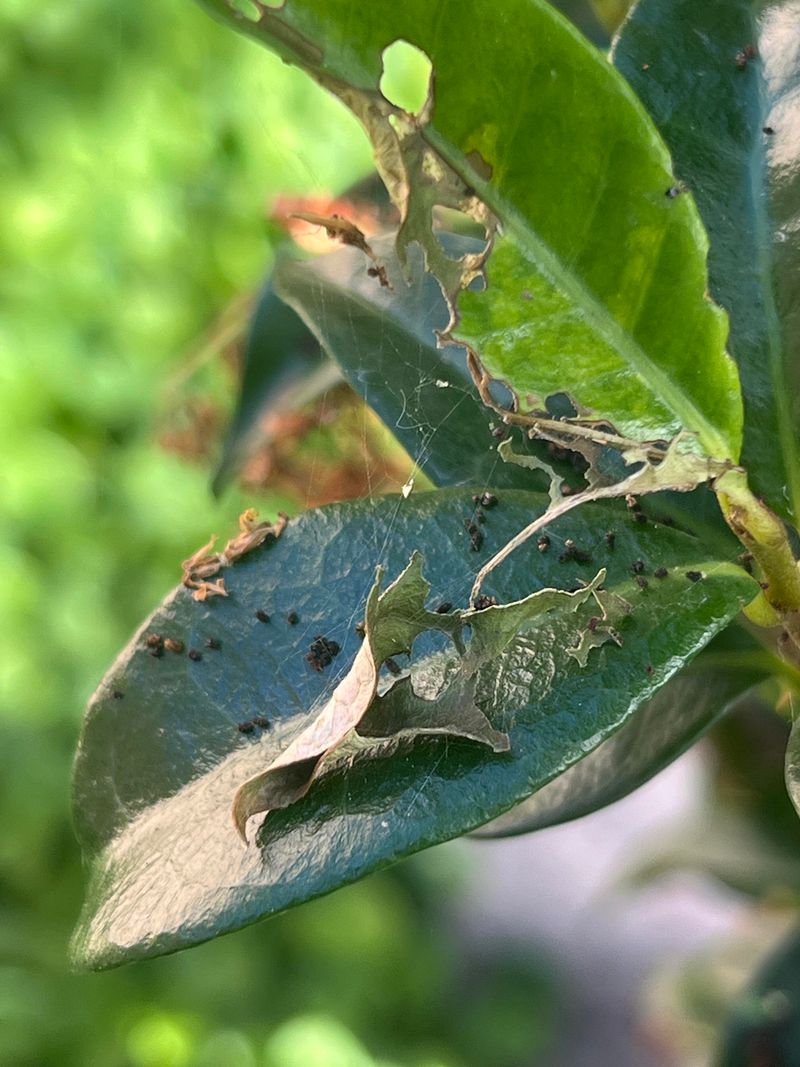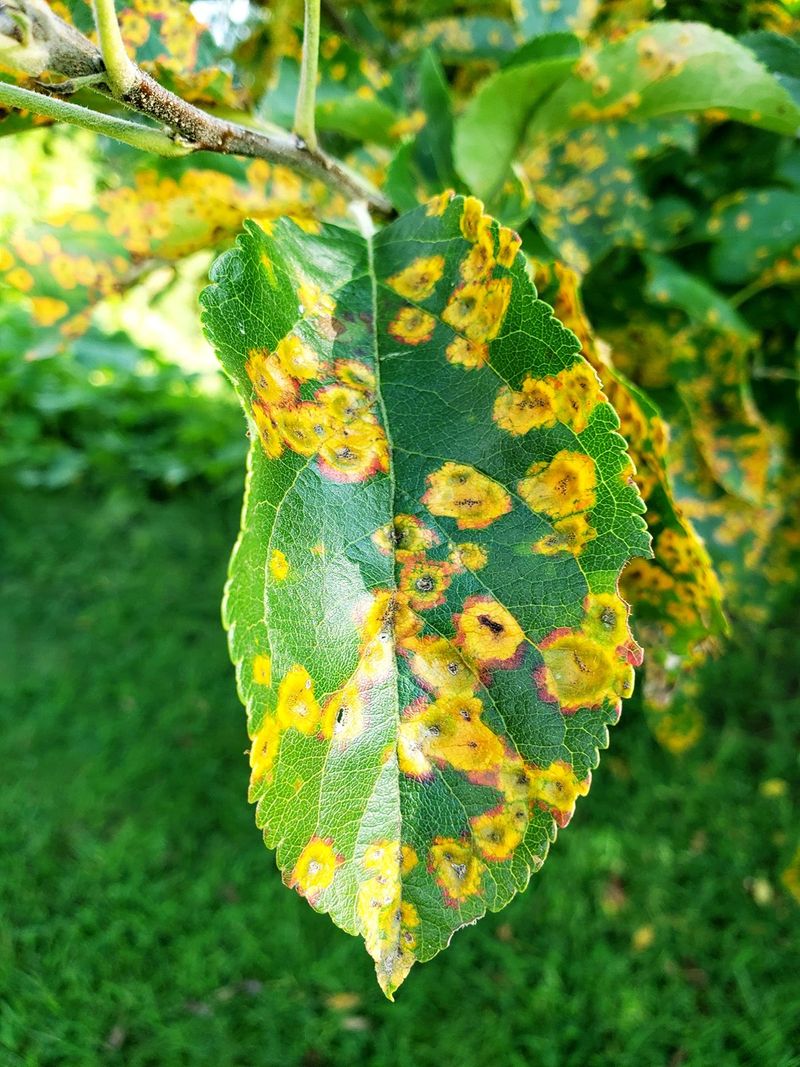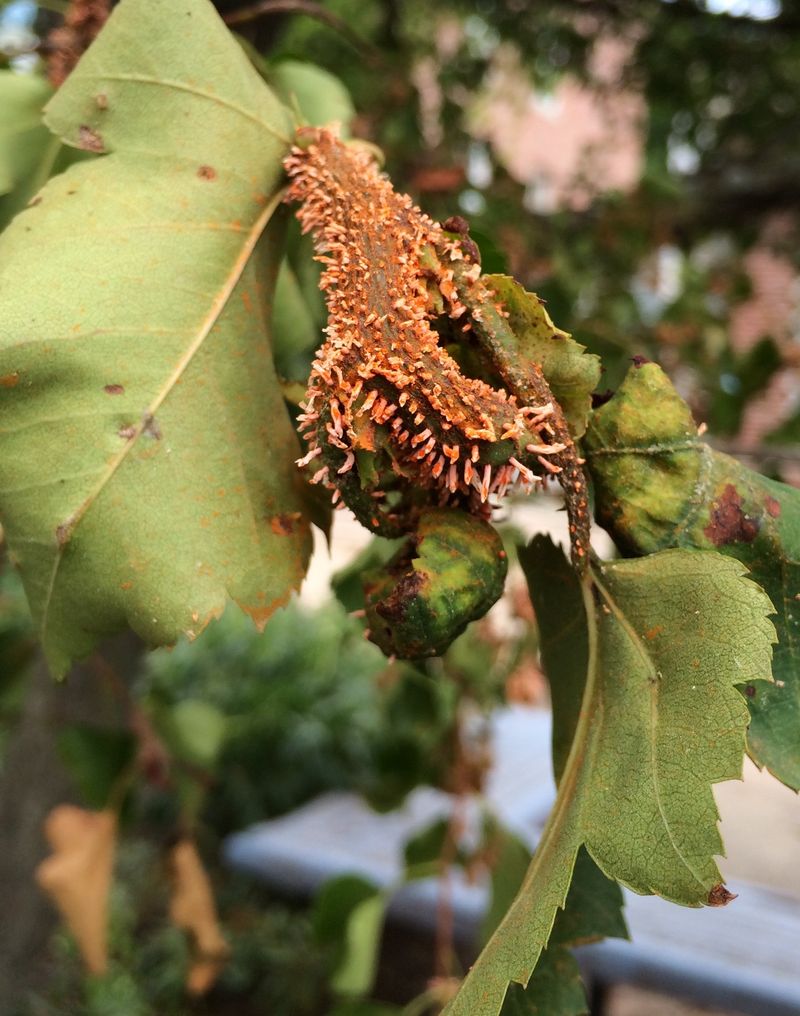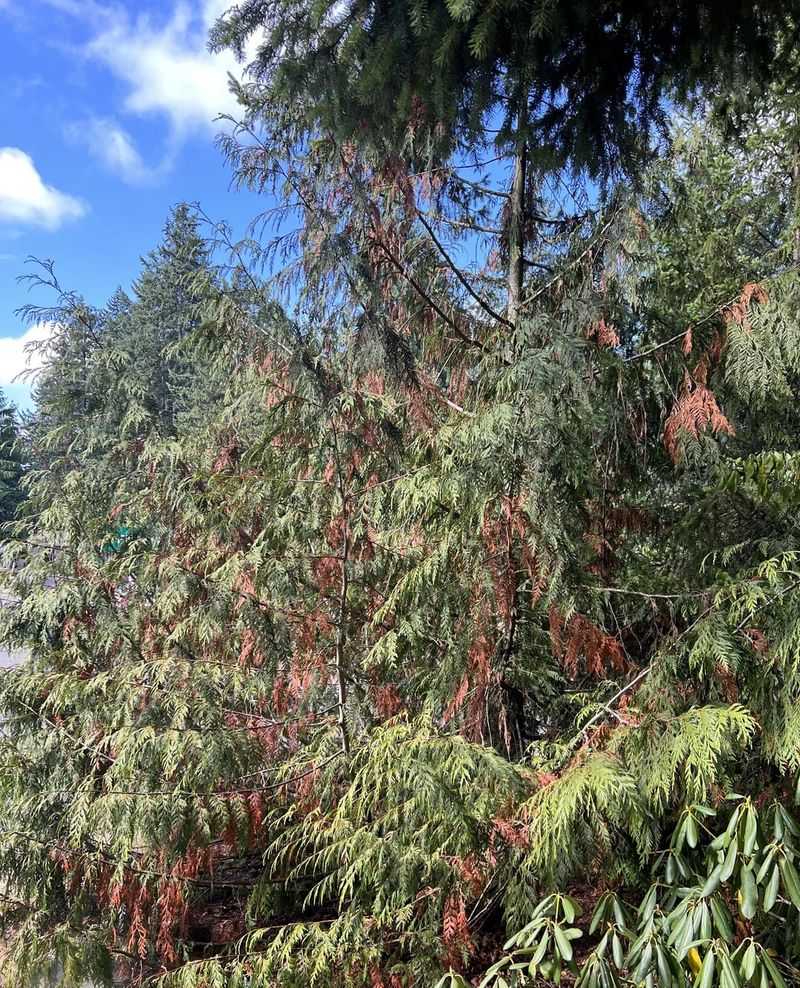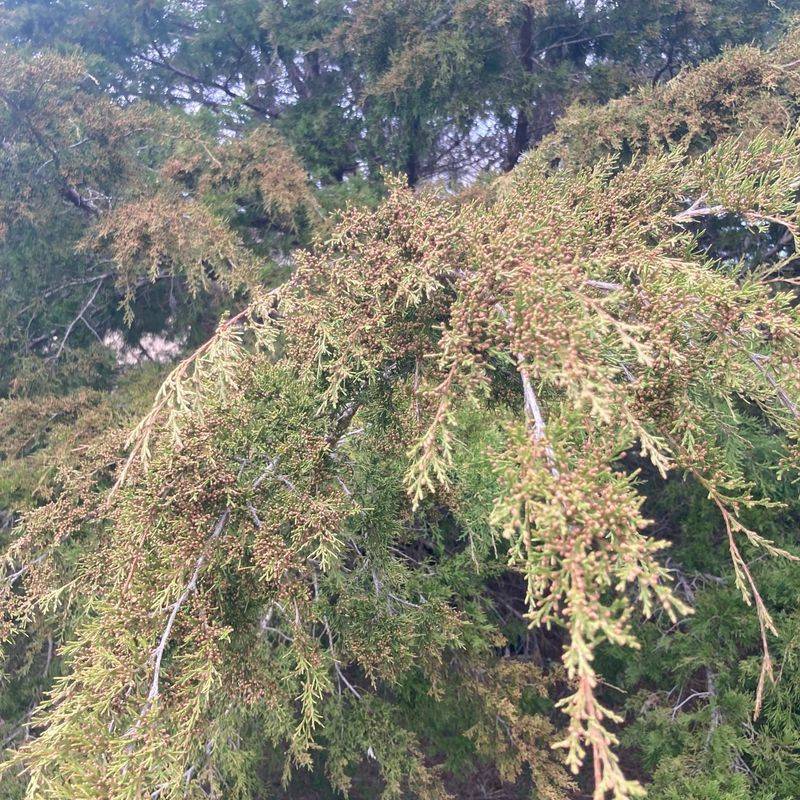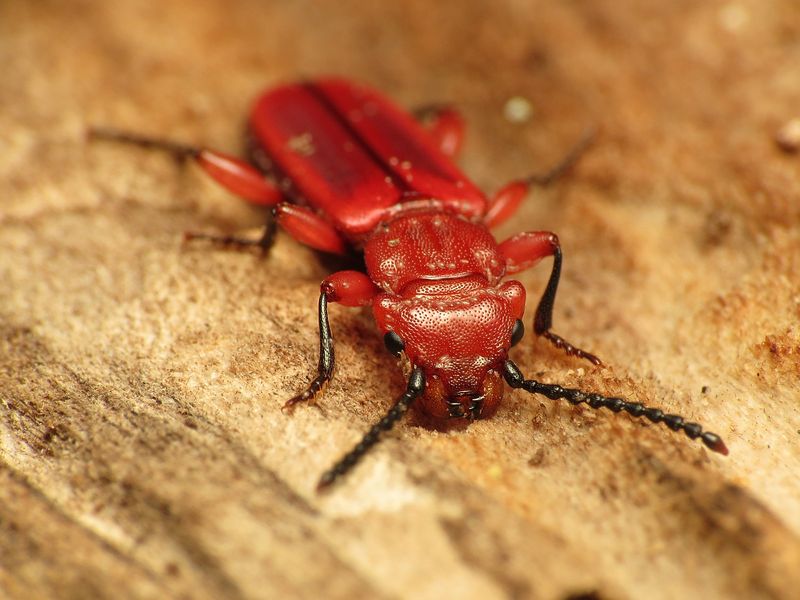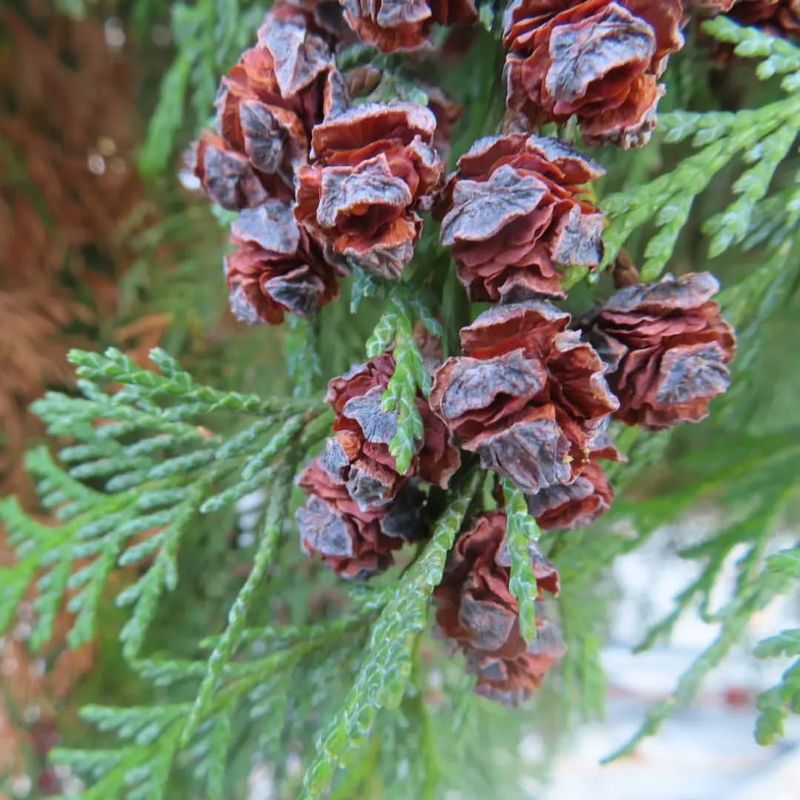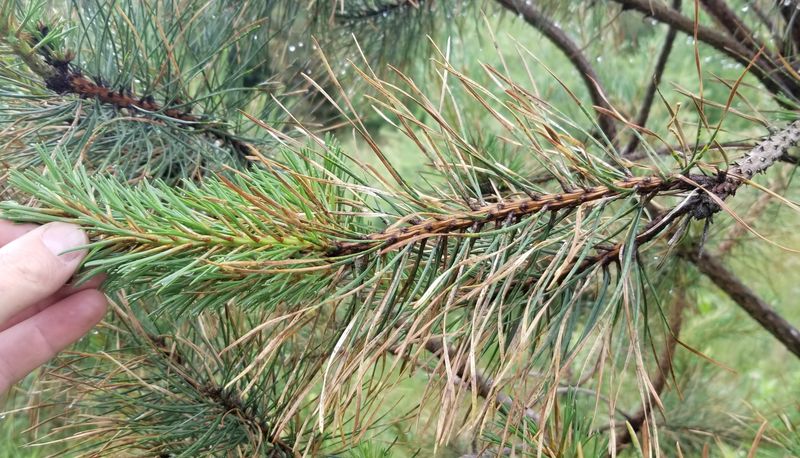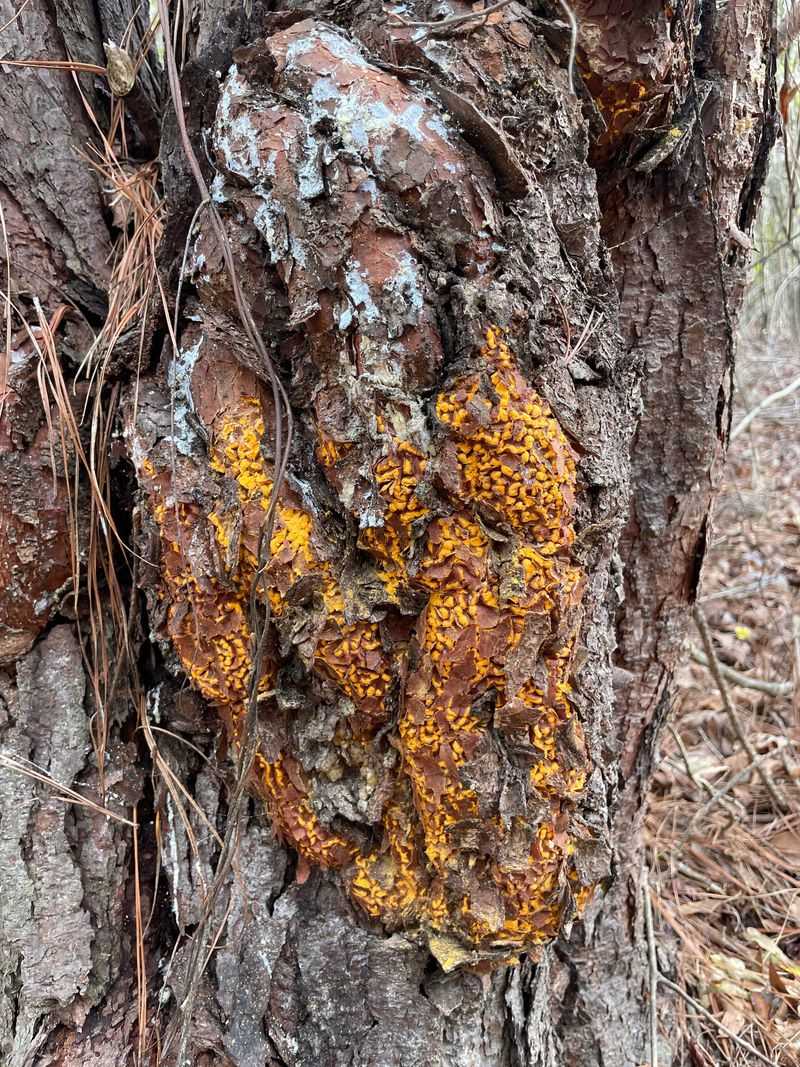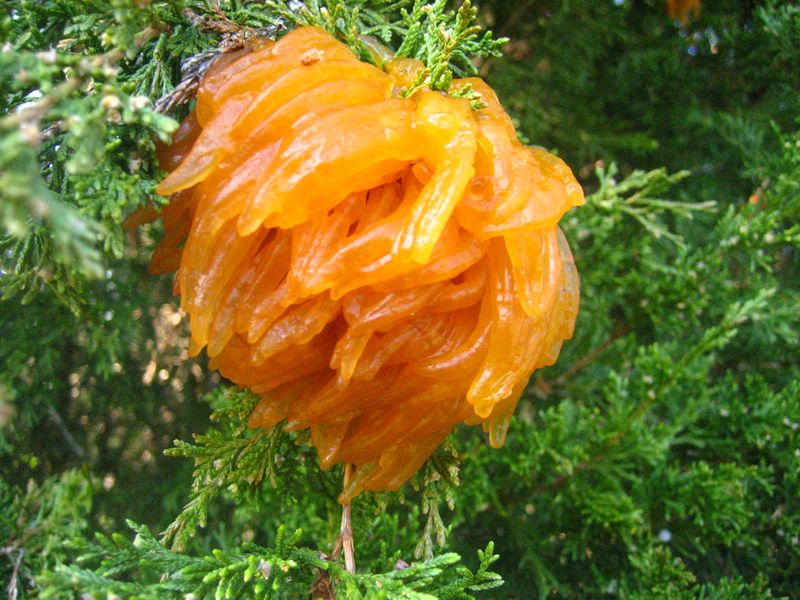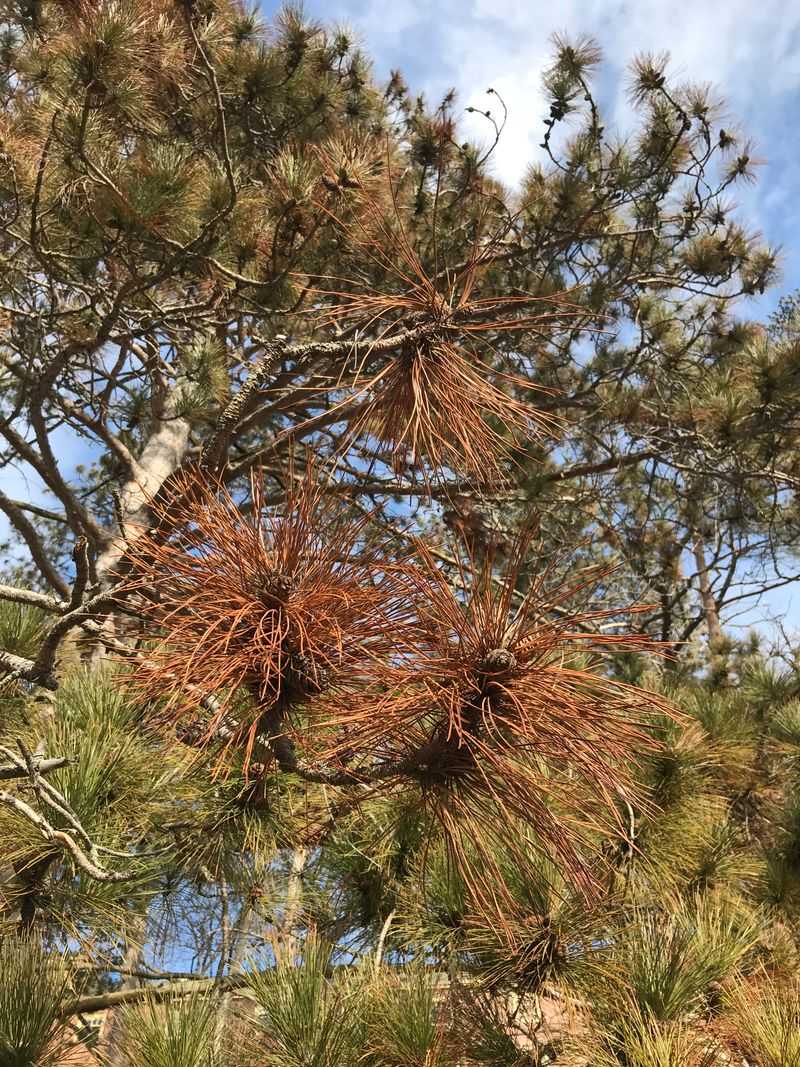Cedar trees usually don’t ask for much—but when they start looking sad, droopy, or downright crusty, there’s probably something bigger going on. These common diseases could be the reason your cedar isn’t thriving.
Some show up slowly, others hit fast, but all of them can do real damage if ignored. From browning needles to weird oozing spots, here’s what to watch for—and how to catch it before things get worse. Your cedar’s throwing signs. Time to decode them.
1. Cedar Apple Rust
Ever noticed something odd and orange hanging from your cedar? Cedar apple rust might be the culprit. This fungus causes bright orange galls on the branches, which can make your tree look like it’s decorated for Halloween.
Keeping your cedar and neighboring apple trees healthy requires vigilance. Remove galls before they produce spores, and consider resistant tree varieties. A balanced approach can save both your cedar and your pie-making endeavors.
2. Needle Blight
When needles start dropping like confetti, you could be dealing with needle blight. This disease causes needles to brown and fall, leaving your cedar looking like it’s prematurely balding. It’s more than just a bad hair day; needle blight can weaken your tree over time.
To tackle this pesky problem, ensure good air circulation and remove infected needles promptly. Fungicides can help too, but catching it early is the key. A healthy cedar is a happy cedar!
3. Root Rot
Feeling a bit droopy? Your cedar might be experiencing root rot. This disease occurs when the roots sit in waterlogged soil, causing them to decay. The tree may show signs of wilting despite having plenty of water.
Improving drainage can be the ticket to recovery. Consider planting on a raised mound or checking your irrigation practices. Remember, not all water is a friend to your cedar’s roots!
4. Juniper Tip Blight
Spotted some browning tips on your cedar? Juniper tip blight might be the sneaky suspect. This disease turns the tips of branches brown, affecting the overall appearance of the tree. It’s like a bad haircut you didn’t ask for.
Pruning away affected areas and applying fungicide can help manage the spread. It’s all about keeping your cedar’s tips looking sharp and healthy. Who doesn’t love a well-groomed tree?
5. Bagworm Infestation
Bags hanging like holiday ornaments? That’s probably bagworms setting up shop. These pests create bag-like structures that hang from branches and can strip your cedar of its foliage. Manual removal of the bags is a straightforward solution.
If the infestation is severe, insecticides may be necessary. Don’t let these little decorators take over your cedar’s style. Keep it chic and green!
6. Phomopsis Blight
Seeing dead shoot tips on your cedar? Phomopsis blight could be the grim reaper behind it. This fungal disease causes dieback of young shoots and leads to cankers on branches.
Regular pruning of dead shoots and maintaining good air circulation are essential steps. Fungicides can also help contain the situation. It’s a classic case of nip it in the bud!
7. Cytospora Canker
Those sunken patches on the bark might be more than just a blemish. Cytospora canker attacks stressed cedars, creating discolored, sunken areas on the branches.
Keeping your tree healthy and minimizing stress through proper care can help prevent this disease. Prune affected branches promptly. It’s all about finding that balance between stress and serenity for your cedar.
8. Seiridium Canker
Cracked and oozing patches on your cedar’s bark can be a sign of Seiridium canker. This disease creates unsightly cankers that ooze resin, giving the tree an unhealthy appearance.
Managing this requires pruning infected parts and providing optimal growing conditions. Fungicides may assist, but the best defense is a strong, resilient cedar. Keep it robust and ready to face any challenge!
9. Spider Mite Infestation
Ever felt like your cedar was hosting a spider convention? Spider mites can cause webbing and discoloration of needles, giving your tree a haunted vibe.
A strong spray of water can knock them off, and insecticidal soap may be used for persistent cases. It’s about keeping those eight-legged invaders at bay while maintaining your cedar’s grace and poise.
10. Anthracnose
Irregular spots on foliage and dying twigs could point towards anthracnose. This fungal disease affects leaves, twigs, and branches, weakening the cedar’s overall health.
Pruning infected parts and ensuring good air circulation are vital for control. Fungicides might be necessary in severe cases. It’s like giving your cedar a refreshing spa day to rejuvenate its charm.
11. Pitch Canker
Resin-soaked lesions appearing on branches can be a sign of pitch canker. This disease can cause significant damage to your cedar’s branches, affecting its structural integrity.
Pruning infected areas and improving tree vigor through proper nutrition and watering can mitigate damage. Preventing stress is key; keep your cedar resilient and ready to withstand the toughest conditions.
12. Sooty Mold
When your cedar looks like it’s been dusted with soot, sooty mold might be the messy guest. This fungus grows on the sticky honeydew left by aphids and other pests.
Controlling the pests is the first step, followed by washing the mold off the leaves. Think of it as cleaning a beautiful painting – beneath the grime lies a masterpiece!
13. Bacterial Blight
Water-soaked, dark lesions on leaves could indicate bacterial blight. This disease can lead to leaf drop and weakened branches in cedar trees. Remove infected leaves promptly and ensure good air circulation around the tree.
Copper-based bactericides may offer additional protection. It’s about giving your cedar the best care package to fend off unwanted bacterial guests.
14. Cedar-Quince Rust
Elongated galls on the twigs might suggest cedar-quince rust. This disease affects not only the cedar but also quince and related plants, bridging the gap between different species.
Prune the galls before they release spores, and consider resistant plant varieties in the vicinity to reduce the likelihood of spread. It’s all about maintaining harmony in your garden!
15. Leaf Scorch
Browning leaf edges and tips might make you think your cedar is sunburned, and you wouldn’t be far off. Leaf scorch occurs due to environmental stressors like drought or too much sun.
Regular watering and mulch can help retain moisture, providing relief to your cedar. It’s about keeping your tree hydrated and cool during challenging weather conditions.
16. Verticillium Wilt
Wilting leaves and branch dieback can raise the alarm for verticillium wilt. This soil-borne fungal disease can severely affect cedar trees’ vascular systems.
Improving soil drainage and providing balanced nutrients can help manage symptoms. While there’s no cure, supportive care can prolong your cedar’s life and vitality.
17. Cedar Bark Beetles
Tiny holes and sawdust-like frass around the bark can be a sign of cedar bark beetles. These little critters bore into the wood, potentially weakening your cedar.
Healthy trees are less susceptible, so ensure proper watering and nutrition. Insecticides may be necessary for severe infestations. Keep your cedar fortress strong against these pesky invaders!
18. Scales
Shell-like insects clinging to branches can mean a scale infestation. These pests suck sap, leaving your cedar weakened and less lively.
Insecticidal soaps and oils can control scales, but monitoring and early intervention are crucial. It’s about keeping those clingy critters in check and your cedar thriving!
19. Lophodermium Needle Cast
Black fruiting bodies on fallen needles might suggest lophodermium needle cast. This fungal disease causes early needle drop, affecting your cedar’s lushness.
Remove fallen needles to reduce spore buildup and improve air circulation. Fungicides may also provide a helping hand. Give your cedar the best shot at maintaining its natural beauty!
20. Armillaria Root Rot
White mycelial fans under the bark and mushrooms sprouting at the base can be signs of armillaria root rot. This disease can attack your cedar’s roots, leading to decline.
Improving drainage and avoiding injury to roots are crucial preventive measures. While difficult to control, maintaining a healthy tree can help it withstand the pressure.
21. Fusiform Rust
Swollen galls on branches might indicate fusiform rust. This disease can cause deformities and weaken your cedar’s structure.
Prune out galled areas and ensure good tree health through proper care. Resistant varieties and timely management can help keep fusiform rust at bay.
22. Cedar Needle Rust
Powdery, rust-colored spores on needles can signal cedar needle rust. This disease weakens needles and affects your tree’s overall vigor.
Remove infected needles and provide good air circulation to limit spread. Fungicides can also be considered in severe cases. It’s all about keeping your cedar looking its green best!
23. Diplodia Blight
Stunted new growth and black pycnidia on needles might point to diplodia blight. This disease affects new shoots, hampering your cedar’s growth.
Prune infected parts and ensure your cedar has optimal growing conditions. Fungicides may help, but early detection is key. Let’s keep those new shoots reaching for the sky!

